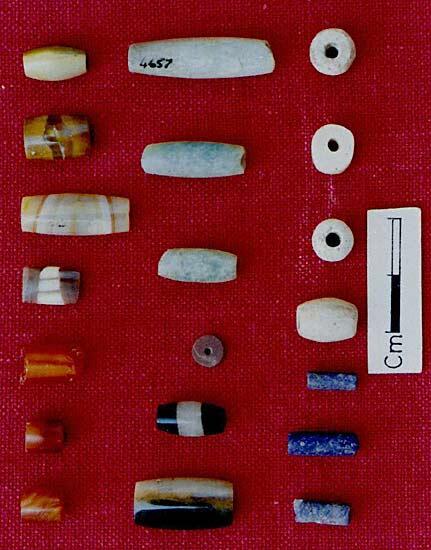Above: Ancient Indus shell and stone beads found at Gola Dhoro.
At present, the city of Khambhat in western India is one of the largest stone beadworking centers of the world, and it has been an important center for over two thousand years of documented history (Arkell 1936;Trivedi 1964). Using archaeologicalevidence, the stone bead industry in this region of India can be traced back even earlier to the cities and villages of the Harappan Phase of the Indus Tradition, dated to around 2500 BC. Because of the long continuity of stone beadmaking in this region, Khambhat provides a unique opportunity to study the organization of a specialized craft and understand how different aspects of social, economic and political organization relating to such crafts might be reflected in the archaeological record. In archaeological studies of urbanism and so-called 'complex societies', craft specialization has come to be used as a major indicator of socio-economic complexity, stratification and centralized control. However, the many different definitions of specialized crafts and the contrasting interpretations of their role in prehistoric societies have led scholars to emphasize the need for more reliable interpretive models that correlate the socio-economic aspects of specialized crafts with the patterning of artifacts in the archaeological record.

